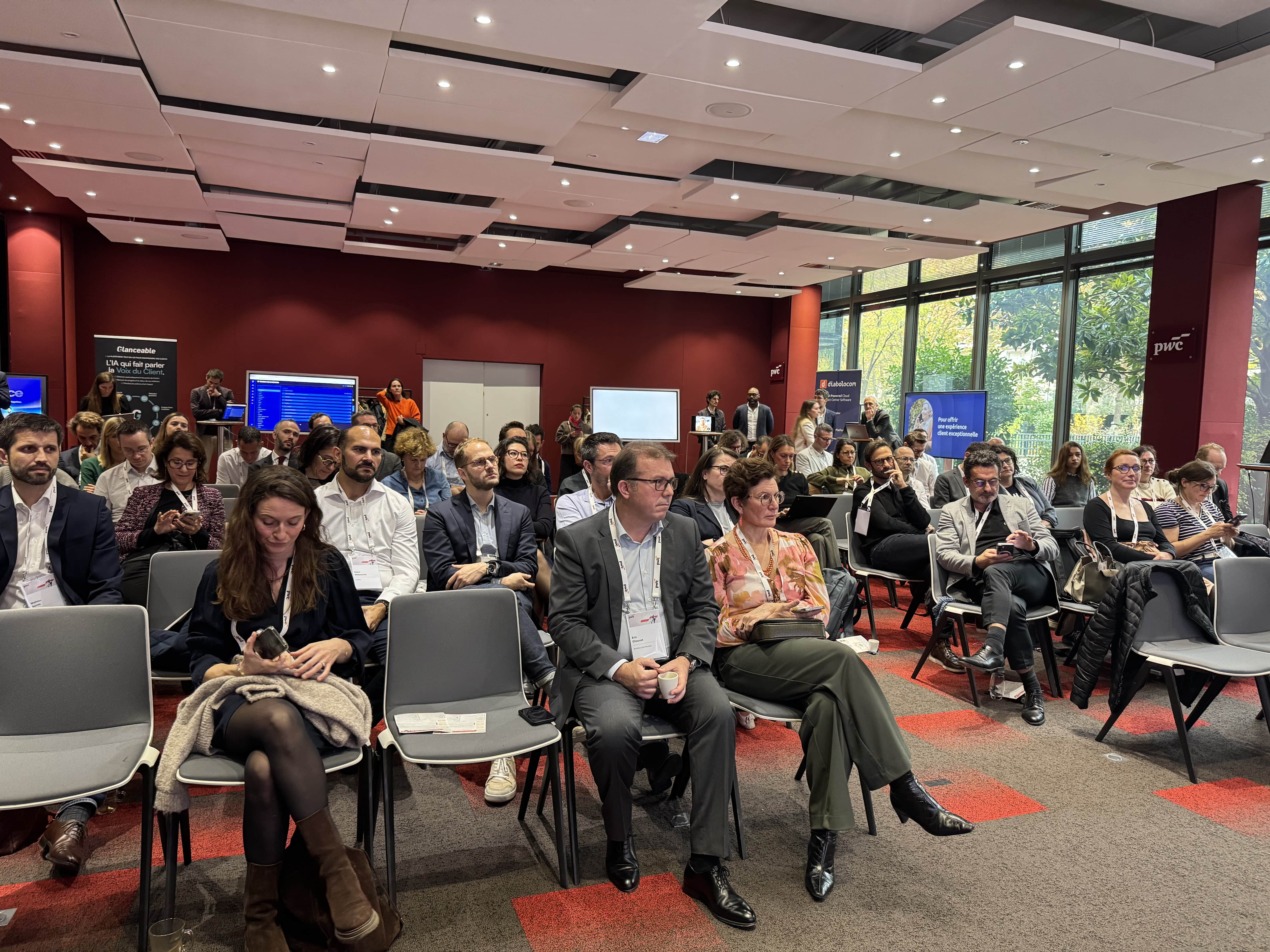AI and Customer Relations: what PwC reveals... and how agentic AI is finally redefining the customer experience
Customer expectations in 2025, cost pressures, technological debt, intelligent automation, AI voice agents: comprehensive analysis and feedback from the PwC breakfast meeting with Bouygues Telecom, Concentrix, and Volubile.

Customer relations are undergoing profound change. Consumer expectations have never been higher, while customer service departments are facing increasing cost pressures and the legacy of past transformations. In this context, generative and agentic AI is emerging as a strategic response. At the latest event dedicated to innovation in customer relations organized by PwC on November 6, “AI & Customer Relationship Transformation,” I shared my vision on the impact of conversational and agentic AI in reinventing the customer experience.
This article draws on the results of PwC's AI Agent Survey to analyze the challenges and solutions that are redefining customer relations.
Customer expectations in 2025: a major challenge
Speed, quality, and personalization have become essential standards in customer relations in 2025. The figures speak for themselves:
- 88% of customer service professionals say that customer expectations are higher than before.
- 64% of customers say they will switch to a competitor if the company does not offer good customer service.
- 90% of customers consider an “immediate” response to be essential or very important—with 60% defining “immediate” as 10 minutes or less.
- 68% of customers consider first contact resolution rates to be essential.
Consumers now expect quick, accurate responses that are available at any time. At the slightest sign of friction—long wait times, poor guidance, inaccurate information—they switch to the competition.
For businesses, this presents a clear choice: invest in technologies capable of handling high volumes of interactions, guaranteeing consistent response quality and absorbing peaks in activity without compromising service.
Cost pressures and the limitations of past transformations
Digitalization and self-service have been adopted to reduce costs. However, these initiatives have not always been successful in controlling expenses, particularly due to the increase in contact volumes. Customer service departments are faced with a paradox: offering a premium experience while optimizing costs.
Added to this is rising advisor attrition, combined with recruitment difficulties. Requests are becoming more complex, and advisor retention is becoming a strategic issue. This tension has a direct impact on the quality of the customer experience.
Technological debt and data silos: a major obstacle
Customer service departments have to contend with significant technological debt and data silos that hinder digitalization. Information is scattered and systems are poorly integrated, limiting the ability to offer a seamless and personalized experience. This fragmentation affects both the customer and employee experience.
AI as a solution: generative and agentic
The popularity of generative and agentic AI can be explained by their ability to solve this dilemma: improving quality while reducing costs. Among companies using AI agents:
- 66% see an increase in productivity.
- 57% achieve cost savings.
- 55% see faster response times.
- 54% improve the customer experience.
In addition, 88% of customer service executives plan to increase their AI budget over the next 12 months, primarily to automate customer relations.
Why is AI a game changer?
- Intelligent automation: AI can handle repetitive tasks such as data entry, managing simple requests, or updating customer information. This frees up time for human advisors, who can focus on high-value interactions and solving complex problems.
- Large-scale personalization: Using predictive and conversational analytics, AI can anticipate customer needs, offer tailored recommendations, and adjust the tone and content of exchanges based on profile and context. This ability to offer a tailored experience, even to millions of customers, is a powerful driver of loyalty.
- 24/7 availability: AI agents provide a continuous, uninterrupted presence to respond to requests at any time. This availability improves customer satisfaction, reduces processing times, and reinforces the perception of an attentive and responsive brand, regardless of time zone or workload.
Concrete use cases: using Volubile
To optimize customer relations, using solutions that combine conversational and agentic AI such as Volubile takes on a strategic dimension:
- Intelligent voice agents: Volubile creates AI telephone agents capable of handling incoming and outgoing calls on a large scale. They respond to requests, take orders, schedule appointments, and provide personalized follow-up, 24/7, with voice quality indistinguishable from a human.
- Automated appointment scheduling: Volubile agents coordinate schedules via integrations such as Google Calendar or Salesforce, sending automatic confirmations by text message or email to reduce no-shows and improve satisfaction.
- Interaction analysis and optimization: The Volubile platform extracts key data from conversations to anticipate needs, qualify leads, and provide accurate KPIs. This intelligence allows you to adjust sales strategies and offer a highly personalized customer experience.
These solutions do more than improve the customer experience: they transform operational efficiency by reducing costs, increasing productivity, and offering a seamless and human experience, even at scale.
Outlook and trends
According to Gartner and Salesforce, agentic AI will account for a growing share of investments over the next three years. Companies that adopt these technologies now will enjoy a lasting competitive advantage.
Conclusion
Customer relations have become a strategic performance factor. In a context of cost constraints and high expectations, generative and agentic AI offer a concrete solution. The PwC figures speak for themselves: companies that invest in AI improve their productivity, reduce their costs, and increase customer satisfaction.
The future of customer relations is being decided now. And as I mentioned earlier, the challenge is no longer about adding new technology, but about completely rethinking customer journeys to make them smoother, faster, and fully results-oriented.




